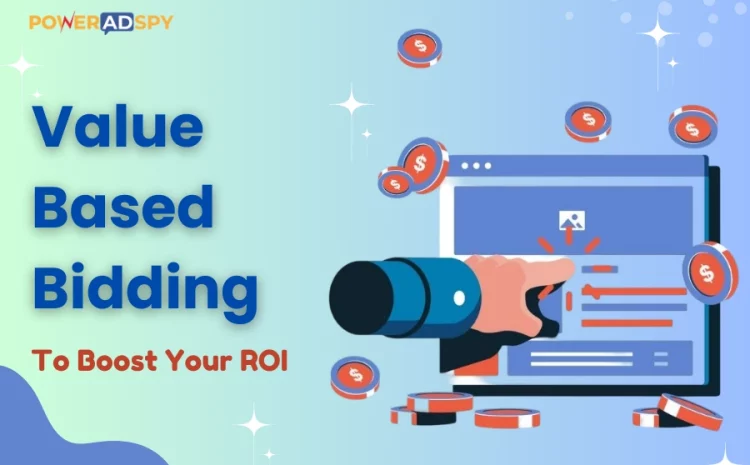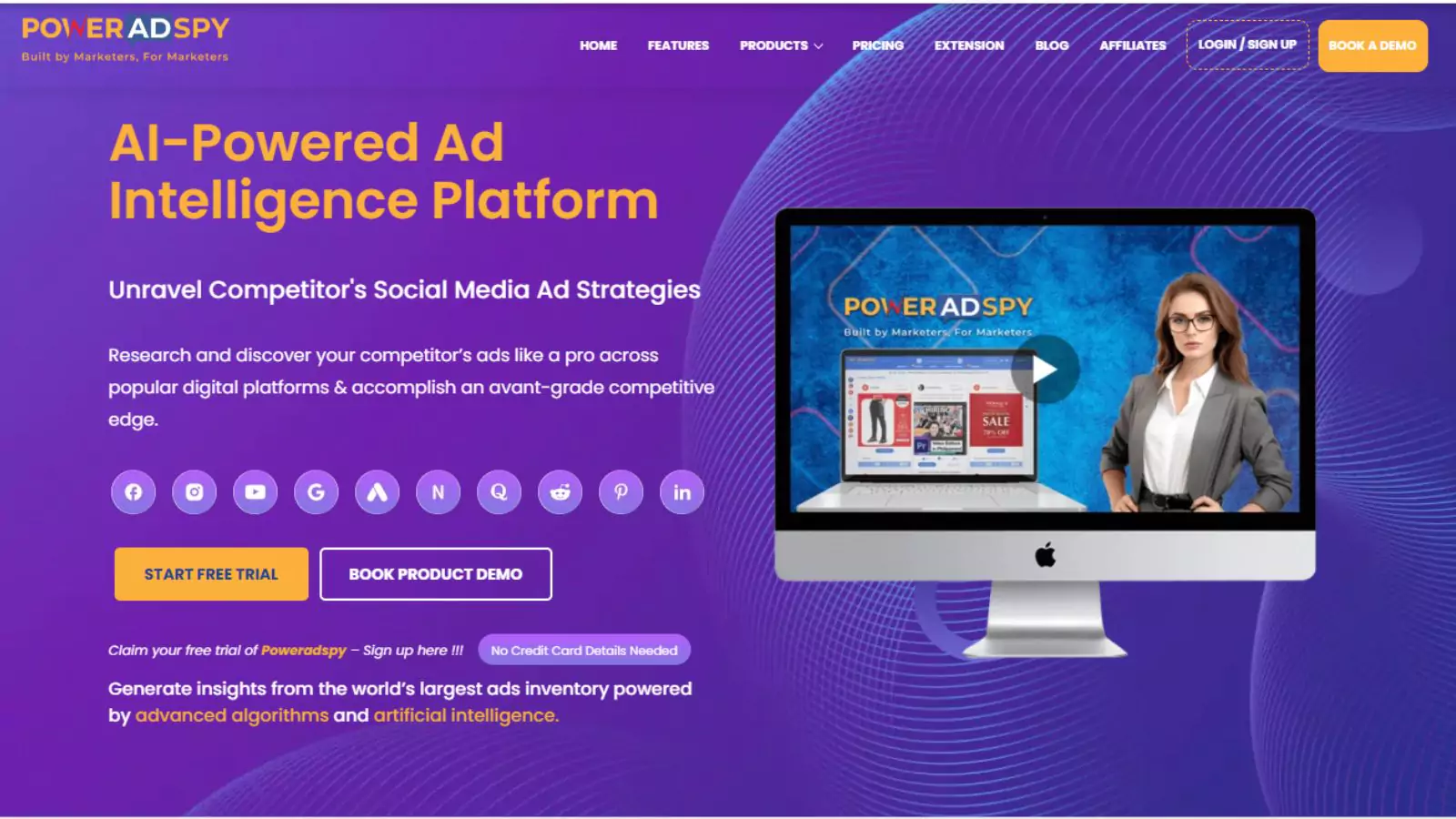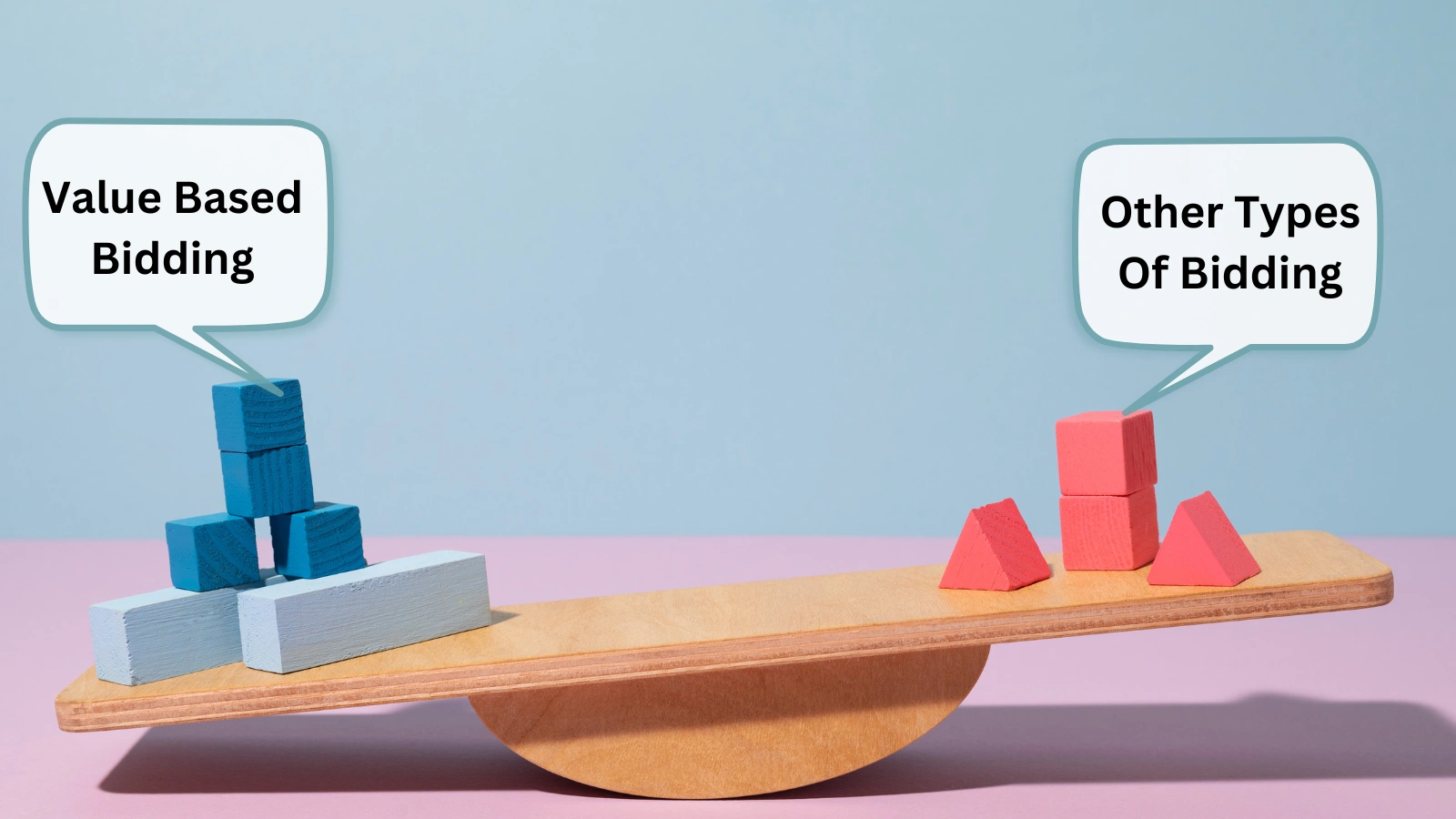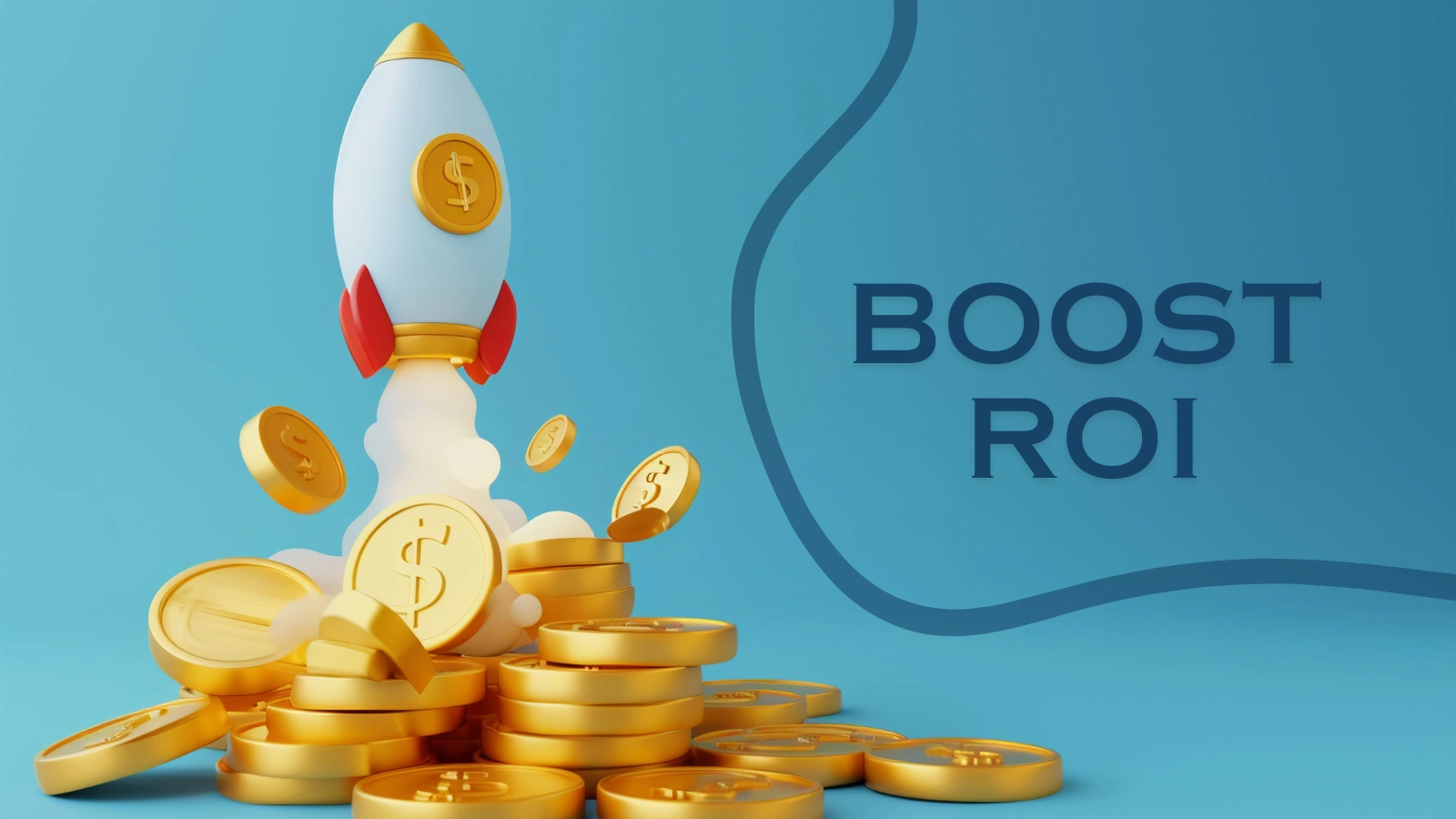How To Boost Your ROI Through Value Based Bidding?
We marketers always seek the best returns on our investment. To be frank, traditional Google Ads bidding often feels like a guessing game. Despite allocating your budget to attract the right customers, you attract tire-kickers and casual browsers.
But, wouldn’t it be great if there was a way to prioritize clicks that lead to high-value conversions, the kind of conversions that actually boost sales in your business?
The answer is value based bidding—a revolutionary approach in Google Ads that shifts your campaigns from merely focusing on clicks to being profit-driven.
Envision a scenario where your ads are precisely targeting users who are more likely to make significant purchases, with bids automatically adjusted to maximize your return on investment.
That’s the power of this strategy. This blog will show you how to leverage this strategy to boost ROI and sales. But before diving into the topic, let us learn what it is and how it works.
Tune Into The Podcast:
What Is Value Based Bidding?
Value based bidding (VBB) is a Google Ads strategy that focuses on the value of conversions rather than their number. This automated bidding approach dynamically adjusts bids in real time using various signals. VBB can be applied to multiple campaign types, including search, shopping, display, and video campaigns.
Previously, with pay-per-click strategies, every click was treated as if it led directly to a final conversion. With AI and machine learning enhancing ad platform automation, bidding strategies have evolved.
You can now assign different values to various conversion stages, distinguishing between the most and least valuable conversions. Assigning higher values to stages closer to the final conversion makes sense, as these are more critical in the customer journey.
Let’s understand with an example.
Imagine bidding on keywords P, Q, R, S, and T, which bring values of $7, $9, $16, $20, and $22 to your marketing efforts. Allocating $9 for keywords P and Q is not cost-effective. However, bidding $9 for keyword T yields a return- twice your investment.
By providing Google ads optimization tips with conversion value data, the platform will prioritize higher bids for more valuable conversions. Consequently, Google advises keeping substantial budgets for value based bidding strategies.
How Does Value Based Bidding Work?
This strategy operates much like strategically choosing billboard locations across different cities. Just as you invest more in high-profit areas like New York City and less in lower-profit areas like Providence Village, Texas, this bidding method adjusts bids based on the value of conversions. Using the provided data, the algorithm learns from past campaigns and audience signals to optimize bids, aiming for the highest return on ad spend (ROAS) while refining its strategies through time.
Value based bidding allows you to assign specific values to different types of conversions. Google’s algorithm then adjusts its automated bidding strategy based on these values, much like prioritizing heavier items.
There are two main types of this strategy:
Maximize Conversion Value:
Instead of getting fixated on maximizing the number of conversions within a budget (like maximizing conversions bidding), this strategy aims to maximize the total value generated from conversions. It prioritizes higher-value conversions by bidding more aggressively for higher-value conversions and less for lower-value conversions.
Target ROAS (tROAS):
This strategy builds upon maximizing conversion value by setting a target return on ad spend (ROAS). The goal is to attain a particular revenue return to the ad spend. The algorithm modifies bids to hit this objective, ensuring that the expenditure on advertising yields the intended revenue level.
These value based bidding strategies leverage data and machine learning to optimize ad campaigns effectively, focusing on maximizing profitability rather than just increasing the number of conversions.
When talking about ad profitability, analyzing the top-performing ads of your competitors can give you the edge to craft better ads. Taking assistance from a Google ad intelligence tool like PowerAdSpy can be highly helpful. This tool enables advertisers to craft creatives that significantly resonate with their target audience.
Let us learn what this tool is and how beneficial it can be for you.
PowerAdSpy- The Most Preferred Google Ad Intelligence Tool
PowerAdSpy is an advanced AI-driven Google ad spy tool that provides deep insights into your competitors’ advertising tactics across social media platforms.
It enables users to track ads on multiple social media platforms, analyze ad performance metrics like engagement and spending, filter ads by type and demographics, and assess social engagement metrics such as likes, shares, and comments. This comprehensive tool aids in optimizing marketing strategies. Some of its best features are:
Ad Tracking:
PowerAdSpy allows users to monitor ads from top social media platforms like Facebook, Instagram, Linkedin, Pinterest, etc. It tracks creative elements, ad copies, and targeting strategies used by competitors.
Search and Filter:
Users can search for specific ads or filter them by keywords, ad type, engagement metrics, and more. This feature simplifies finding relevant and effective ads.
Ad Performance Analytics:
The tool provides insights into ad performance metrics like engagement, likes, shares, comments, and ad expenditure. It helps marketers identify successful ads.
Demographics and Targeting:
PowerAdSpy also shows you the demographic data targeted by specific ads, helping marketers understand competitor audience segments.
Ad Type Filtering:
Marketers can sort ads by types like image ads, video ads, and story ads to identify the most popular formats.
Social Engagement Metrics:
It displays metrics like likes, shares, and comments to gauge how well an ad connects with its audience.
PowerAdSpy is essential for marketers who want to improve their Google Ads campaigns by learning from and using competitor advertising strategies.
How It Benefits Your Performance Max Campaigns
Value based bidding benefits your Google ad campaigns and your performance max campaigns. When you adopt it, you will notice an increase in conversion value and overall profit margins. Recent studies indicate a 14% rise in conversion value when switching from targeted CPA to targeted ROAS strategies.
To effectively implement maximizing conversion value bidding in Performance Max campaigns, consider its benefits. Performance Max optimizes bid values instantly, ensuring timely ad placement across all spaces. This strategy emphasizes prioritizing quality and adjusting bids dynamically according to conversion values. It targets high-potential audiences and optimizes campaigns dynamically towards specific objectives like conversions or leads.
Utilizing this strategy in Performance Max ensures your ad spend is directed towards achieving a desired ROAS across Google’s platforms. It offers control over budgets and personalized ads based on user preferences and requires adequate budgeting for optimal results.
Difference Of Value Based Bidding From Other Bidding Strategies
The VBB strategy differs from other bidding strategies like Target CPA and Maximize Conversions in several key ways:
Focus on Conversion Value:
While Target CPA (Cost Per Acquisition) aims to achieve conversions at a specific cost and MC (Maximize Conversions) targets to get the most conversions within a set budget, value based bidding prioritizes the value of each conversion. It assigns different values to various conversions based on their importance to your business.
Optimization for Profitability:
It is geared towards maximizing the overall revenue or profit margin generated from conversions rather than just increasing the number of conversions. It adjusts bids to ensure valuable conversions receive more aggressive bidding, optimizing for profitability rather than volume.
Flexibility and Customization:
Unlike Target CPA and Maximize Conversions, which typically apply a uniform bidding strategy across all conversions, it allows for customization. Different conversion types can be assigned different values, resulting in different bids reflecting their relevance and profitability.
Integration of Conversion Data:
Value based bidding relies on accurate conversion value data to make informed bidding decisions. Based on the actual value of each conversion, the bidding algorithm adjusts bids dynamically in real-time.
Rather than increasing conversion costs or volume per conversion, it maximizes conversion value or profitability. This approach provides greater flexibility and customized optimization, aligned with your business objectives and priorities.
How To Set Up Value Based Bidding
First, set up conversion tracking to monitor all user actions important to your campaign’s success. This offers insights into the user journey and aids in assessing the effectiveness of your smart bidding strategy with best practices.
For conversions with monetary value, ensure the currency matches your Google Ads billing account. If dealing with different currencies, set up conversion currency in Google Analytics to align with your billing currency.
For conversions without monetary worth, like sign-ups for a free webinar, assign a nominal value such as ‘4’ to track and compare performance. Choose the “No currency set” option to see conversion values regardless of the currency used.
To set up conversion values:
- Sign in to your Google Ads account.
- Select the tools icon located in the upper right corner.
- Under Measurement, select Conversion.
- Select the conversion action you want to assign a value.
- Click edit settings, then Value, and opt for “Use the Same Value For Each Conversion.”
- Save your settings, and it is done.
When choosing the value assignment, you will find three options such as:
- Use The SAME Value For Each Conversion
- Use Different Values For Each Conversion
- Avoid Using A Value For This Conversion Action (not recommended).
If all conversions have a similar cost, choose the first option. If you need to track many products with distinct values, prefer the second option. You’ll then need to specify the price for each product by adjusting the code on your website pages.
How To Use It To Boost ROI
Choosing your bidding strategy and launching your campaign is not the end-all of using VBB. It’s just the beginning. No need to worry—we’ll walk you through the five steps to maximize your ROI. They are:
1. Establish Your Business Goals Clearly:
First, it’s essential to define your business objectives clearly. Just as what’s valuable varies from person to person, different brands prioritize different goals. These objectives will determine how you approach value based bidding, as each type of conversion carries distinct importance for your marketing campaigns.
For example:
Increasing qualified leads might require you to double lead volume by 50% within 12 months.
For reducing customer acquisition costs, you could aim for a 40% decrease in Cost Per Acquisition (CPA).
Your objective must be to achieve an 80% increase in website traffic to improve visibility.
If increasing sales is the focus, you might aim to boost ad revenue by at least 20%.
Understanding and aligning these objectives is crucial because they shape your strategy in SEO, PPC, or both. This approach ensures your marketing efforts get directed towards what’s most important for your business, with a clear timeline for achieving your goals.
2. Collect Your Data:
Google Analytics provides valuable historical performance insights such as cost per click (CPC), return on ad spend (ROAS), and conversion rates from past search campaigns. However, to enhance your value based bidding strategy, it’s also crucial to consider current insights specific to your business.
Offline Conversions And First-Party Data: While online actions are important, offline activities captured by Google, such as store visits or patterns tracked via mobile devices, provide valuable signals for bidding strategies. It is beneficial for ecommerce, local businesses, and B2B companies.
B2B Strategies: For B2B firms, focusing on offline behavior is crucial for revenue strategies, ensuring conversions translate into actual customers. Key indicators include Customer Acquisition Cost (CAC), Marketing Efficiency Ratio (MER), and Revenue.
Customer Lifetime Value (CLV) and Average Order Value (AOV): Understanding CLV estimates and AOV helps gauge customer purchasing trends and overall value.
Customer Location and Device:
Factors like the location of your customers and the devices they use (e.g., desktop vs. mobile) influence bidding decisions. For instance, SaaS businesses often prioritize desktop users due to higher-value conversions.
Customer Journey Length:
The time it takes for leads to convert into customers varies across industries. This insight helps tailor bidding strategies based on the typical length of the customer journey.
ConversionIQ:
Utilizing tools like ConversionIQ provides real-time visibility into the entire sales funnel, allowing for precise adjustments in conversion strategies. It helps prioritize valuable users and optimize revenue generation.
With these insights, businesses can effectively implement value based bidding strategies tailored to their unique objectives and customer behaviors.
3. Choose The Appropriate Bidding Strategy And Budget For Your Campaign:
Select the Maximize Conversion Value bidding strategy in your Google Ads account. It allows Google’s algorithm to prioritize conversions with the highest value. Optionally, you can also set a target return on ad spend (tROAS) to align with your business goals, ensuring realistic expectations based on your historical performance.
For instance, if your historical ROAS has been 40%, aiming for 200% might be ambitious unless supported by expert guidance from a Google Premier Partner like HawkSEM. They successfully boosted ROAS by 471% for their SaaS finance client, TimeWarp Trading.
Set a daily bidding budget that fits your overall marketing budget if you have doubts about setting a target ROAS. You can apply this strategy to individual campaigns or across multiple campaigns based on your needs.
Also Read:
5 Powerful Best Practices For Google Bid Strategy in 2024
7 Google Ads Optimization Tips to Boost Your ROI Now
4. Assign Values To Each Stage Of Your Customer Journey:
The path your audience takes from being a passing visitor to being a devoted customer is outlined in your sales funnel. The process includes multiple conversion points, each contributing differently to your return on investment (ROI).
For example, if you own a SaaS company, your funnel may consist of going to the contact page, filling out forms to request information, registering for a free trial, and purchasing the product. It’s essential to assign a value to each of these conversions. Google facilitates this by asking for the percentage of customers reaching each step and estimating a bid for each conversion based on that data.
However, every business has unique priorities. For example, you might prioritize city residents over suburban families. And for SaaS companies, considering Weber’s advice on desktop users is crucial:
You should set a lower bid or value for mobile rather than desktop users. It signals Google to prioritize desktop traffic over mobile, helping to optimize your bidding strategy effectively.
5. Set Up Rules For Conversions:
Value in advertising depends heavily on specific traits of your target audience. It is where conversion rules play a crucial role, as explained by Weber:
Weber explains that conversion value rules are the instruments that enable you to indicate to Google the relative value of users, influenced by factors such as their location, device type, audience category, or preference for brick-and-mortar sales.
These rules guide Google’s algorithm to prioritize specific signals through conversion values, adjusting bids to emphasize or de-emphasize certain attributes.
You can tailor conversion values based on-
Location: A SaaS company might prioritize tech hubs like Austin or San Francisco for higher bid values due to the potential for more referrals.
Audience behavior: Identify trends such as frequent engagement on social media or multiple visits to your website, signaling valuable user actions to Google.
Device: Bid more for conversions from users on devices compatible with your software, such as Apple products, over others like Android.
These strategies help optimize your bidding tactics to target the most valuable audiences.
Conclusion:
Adopting value based bidding can revolutionize your Google Ads strategy by focusing on conversions that bring real business value rather than just clicks. This method utilizes AI and machine learning to optimize bids, enhancing return on investment (ROI) and profitability.
It prioritizes high-value conversions, reduces ad waste, and ensures your marketing budget gets spent effectively. You can improve your campaigns through well-defined company objectives, thorough data-gathering methods, and tactical bidding tactics. Also, you can take assistance from an intelligent Google ad spy tool like PowerAdSpy to analyze the ad creatives of your competitors and create successful ads.
Embrace it to drive meaningful results, refine your advertising tactics, and achieve sustainable growth for your business in the competitive digital landscape.
Do you have any questions concerning value based bidding? Examine our FAQs section!
Value Based Bidding FAQs
What Is A Conversion Bidding Strategy?
The Conversion Value bidding strategy is an advanced method that aims to maximize the total worth of your conversions using the tracking you’ve set up. It doesn’t prioritize increasing the number of conversions but instead emphasizes increasing their overall value.
What Is Conversion Based Bidding?
Conversion-based bidding is a strategy in Google Ads where you place bids to achieve the highest conversions. The main goal is to set a target CPA and optimize the campaign to maximize the number of conversions. Smart Bidding automates this process to ensure you get as many conversions as possible within your target CPA.
What Is The Difference Between Value Based Bidding And Conversion-Based Bidding?
In simple terms, conversion bidding aims for more conversions at a set cost per acquisition (CPA), focusing on quantity. On the other hand, value based bidding prioritizes high-value conversions by bidding more aggressively, aiming to maximize conversion worth. This approach helps achieve your desired return on ad spend (ROAS), emphasizing quality over quantity in your advertising strategy.










